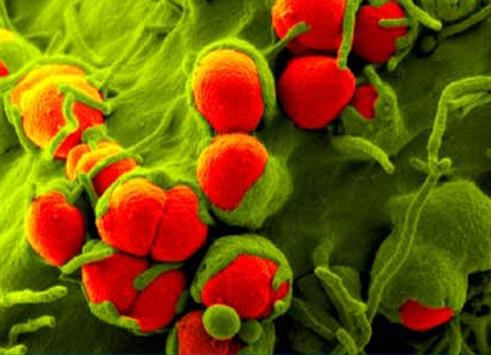
Sexually transmitted diseases arepainful lesions of the organism of infectious type, the infection of which occurs mainly during sexual intercourse. Such infections in traditional medicine are classified as a group of sexually transmitted diseases (mild chancroid, gonorrhea, donovanosis, syphilis). Infections are parenteral (HIV, hepatitis B), direct contact (scabies) and vertical (HIV, chlamydia).
Sexually transmitted diseases have five types of infections: protozoal, viral, bacterial, fungal infections, as well as parasitic diseases.

Bacterial infections include a widegroup of diseases: inguinal granuloma, mycoplasmosis, mild chancroid, ureplasmosis, venereal lymphogranuloma, syphilis, chlamydia and gonorrhea. Each of these diseases is transmitted by specific bacteria that cause a certain infection.
Syphilis is transmitted by pale treponema and isa chronic systemic venereal disease that affects the mucous membranes, skin and nervous system with a consistent change in the painful stages. Sexually transmitted diseases are also spread by the gonococcal bacteria. The disease caused by the gonococcus is called gonorrhea. This disease affects the mucous membranes (mainly the genito-urinary organs).

Viral infections include HIV, herpes simplex type 2, papillomavirus, genital warts, hepatitis B, molluscum contagiosum, cytomegalovirus and Kaposi's sarcoma.
Hepatitis B infection is transmitted by the virus of the family of hepadnaviruses, characterized by high resistance to various chemical and physical effects: boiling, freezing,
Viral diseases, sexually transmitted infections,extremely resistant to various factors. A single virus can remain alive for up to several weeks, even in a small, dried blood drop. Hepatitis B leads to liver disease, HIV causes HIV infection (AIDS), etc.

Protozoal infections include diseaseTrichomoniasis, a provocation of which is Trichomonas. This disease ranks first in the prevalence among diseases of the genitourinary system. According to the World Health Statistics, 10% of the population of the whole Earth suffer from it. Venereal diseases that are sexually transmitted can have serious consequences, so it is very important to maintain maximum cleanliness in the relationship.
Trichomoniasis can cause a painfulthe course of pregnancy and even infertility. In the female body, Trichomonas live in the vagina, and in the male body in the seminal vesicles, the urethra and the prostate gland.

Fungal infections include yeastfungi of the genus Candida, causing Candidiasis, called milkmaids. These microorganisms can be part of a healthy microflora of the colon, vagina and mouth in most people. The onset of the disease is due to the active reproduction of fungi of the genus Candida. Most often candidiasis occurs in conditions of low (weak immunity).
Skin diseases, sexually transmitted infections,can cause and parasites. Parasitic diseases include phthiasis (or entomosis), which is caused by parasitization of pubic lice. It can be scabies caused by an itch mite. A characteristic feature of scabies is severe itching and papuloveziculosis rash with the formation of secondary pustular infections.
Diseases that occur during sexual intercourse,are very dangerous, because they quickly spread and lead to the most severe consequences. Therefore, in addition to compliance with all rules of cleanliness, it is necessary to undergo periodic examination in the hospital.
